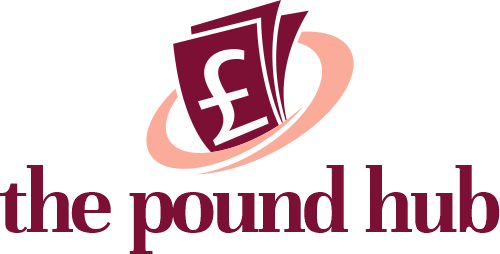- GBP/USD trades modestly lower on the day below 1.3550.
- The technical suggests that the bullish bias remains intact but loses momentum.
- Markets await mid-tier data releases from the US.
GBP/USD corrects lower and trades slightly below 1.3550 on Tuesday after setting a new multi-year peak near 1.3600 on Monday. The pair remains technically bullish but struggles to preserve its momentum.
British Pound PRICE This week
The table below shows the percentage change of British Pound (GBP) against listed major currencies this week. British Pound was the strongest against the Japanese Yen.
| USD | EUR | GBP | JPY | CAD | AUD | NZD | CHF | |
|---|---|---|---|---|---|---|---|---|
| USD | 0.17% | -0.10% | 1.12% | 0.20% | 0.64% | 0.56% | 0.69% | |
| EUR | -0.17% | -0.25% | 0.98% | 0.03% | 0.47% | 0.40% | 0.53% | |
| GBP | 0.10% | 0.25% | 0.92% | 0.29% | 0.72% | 0.65% | 0.79% | |
| JPY | -1.12% | -0.98% | -0.92% | -0.91% | -0.50% | -0.62% | -0.43% | |
| CAD | -0.20% | -0.03% | -0.29% | 0.91% | 0.45% | 0.36% | 0.50% | |
| AUD | -0.64% | -0.47% | -0.72% | 0.50% | -0.45% | -0.11% | 0.07% | |
| NZD | -0.56% | -0.40% | -0.65% | 0.62% | -0.36% | 0.11% | 0.14% | |
| CHF | -0.69% | -0.53% | -0.79% | 0.43% | -0.50% | -0.07% | -0.14% |
The heat map shows percentage changes of major currencies against each other. The base currency is picked from the left column, while the quote currency is picked from the top row. For example, if you pick the British Pound from the left column and move along the horizontal line to the US Dollar, the percentage change displayed in the box will represent GBP (base)/USD (quote).
The broad-based US Dollar (USD) weakness on growing concerns over the fiscal outlook helped GBP/USD stretch higher at the beginning of the week. With financial markets remaining closed in observance of the Memorial Day holiday, however, the trading action turned subdued in the second half of the day on Monday, limiting GBP/USD’s upside.
US stock index futures gain more than 1% in the European session on Tuesday, reflecting an improving risk mood. Easing fears over a prolonged trade conflict between the European Union and the United States (US) following US President Donald Trump’s decision to delay 50% tariffs on European imports until July 9 seems to be allowing risk flows to return to markets.
Later in the day, April Durable Goods Orders and May CB Consumer Confidence Index data from the US will be watched closely by market participants. A noticeable recovery in consumer sentiment could support the USD with the immediate reaction. On the other hand, a further deterioration in confidence could hurt the currency and help GBP/USD regain its traction.
GBP/USD Technical Analysis

The Relative Strength Index (RSI) indicator on the 4-hour chart stays above 60 and GBP/USD remains within the upper half of the ascending regression channel, while holding above the 20-period Simple Moving Average, suggesting that the bullish bias remains intact in the near term.
Looking south, first support could be seen at 1.3500 (static level, round level) before 1.3480 (mid-point of the ascending channel) and 1.3400 (static level, round level). On the upside, 1.3600 (static level) aligns as the first resistance level ahead of 1.3720 (upper limit of the ascending channel).
Pound Sterling FAQs
The Pound Sterling (GBP) is the oldest currency in the world (886 AD) and the official currency of the United Kingdom. It is the fourth most traded unit for foreign exchange (FX) in the world, accounting for 12% of all transactions, averaging $630 billion a day, according to 2022 data.
Its key trading pairs are GBP/USD, also known as ‘Cable’, which accounts for 11% of FX, GBP/JPY, or the ‘Dragon’ as it is known by traders (3%), and EUR/GBP (2%). The Pound Sterling is issued by the Bank of England (BoE).
The single most important factor influencing the value of the Pound Sterling is monetary policy decided by the Bank of England. The BoE bases its decisions on whether it has achieved its primary goal of “price stability” – a steady inflation rate of around 2%. Its primary tool for achieving this is the adjustment of interest rates.
When inflation is too high, the BoE will try to rein it in by raising interest rates, making it more expensive for people and businesses to access credit. This is generally positive for GBP, as higher interest rates make the UK a more attractive place for global investors to park their money.
When inflation falls too low it is a sign economic growth is slowing. In this scenario, the BoE will consider lowering interest rates to cheapen credit so businesses will borrow more to invest in growth-generating projects.
Data releases gauge the health of the economy and can impact the value of the Pound Sterling. Indicators such as GDP, Manufacturing and Services PMIs, and employment can all influence the direction of the GBP.
A strong economy is good for Sterling. Not only does it attract more foreign investment but it may encourage the BoE to put up interest rates, which will directly strengthen GBP. Otherwise, if economic data is weak, the Pound Sterling is likely to fall.
Another significant data release for the Pound Sterling is the Trade Balance. This indicator measures the difference between what a country earns from its exports and what it spends on imports over a given period.
If a country produces highly sought-after exports, its currency will benefit purely from the extra demand created from foreign buyers seeking to purchase these goods. Therefore, a positive net Trade Balance strengthens a currency and vice versa for a negative balance.







